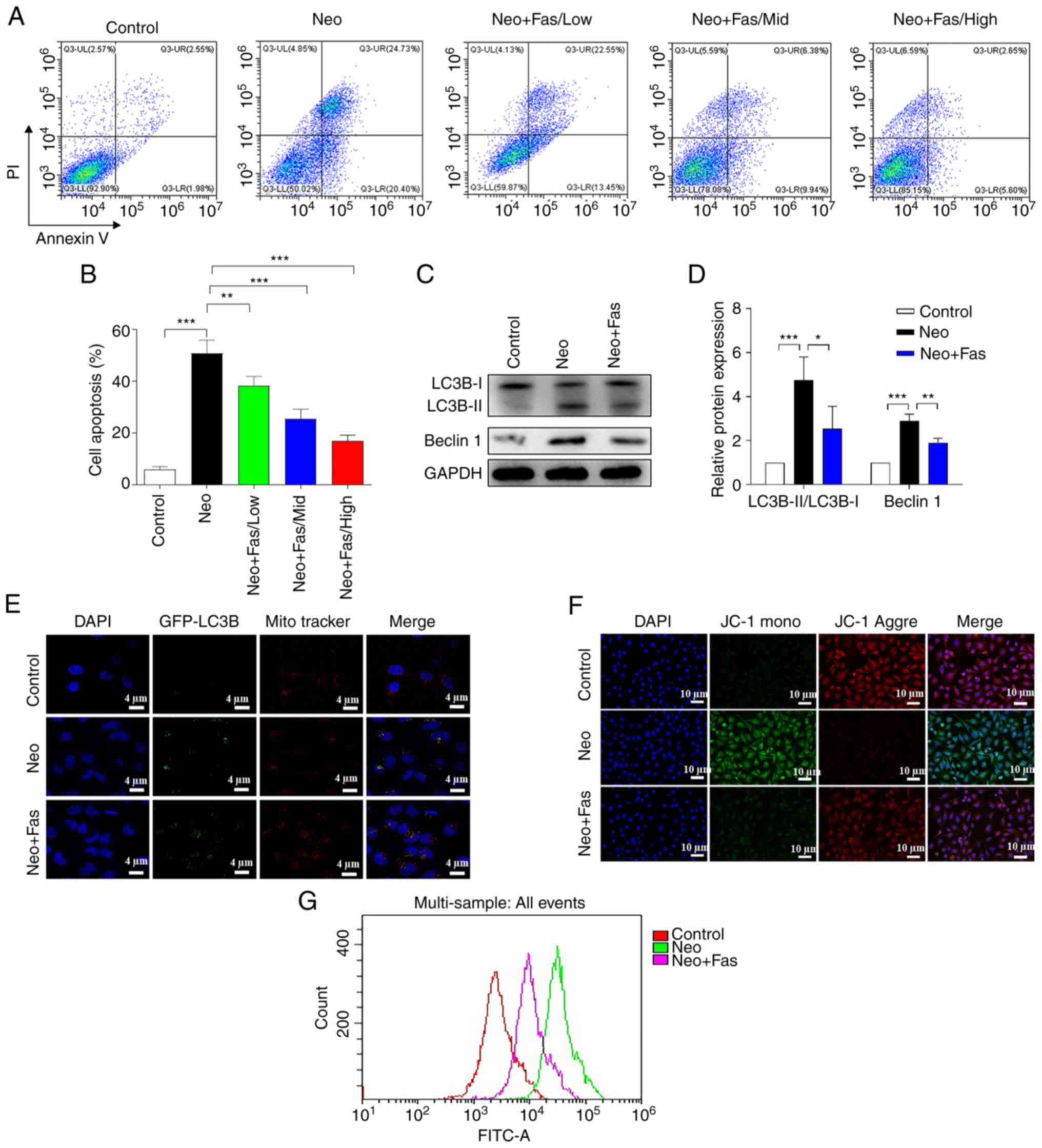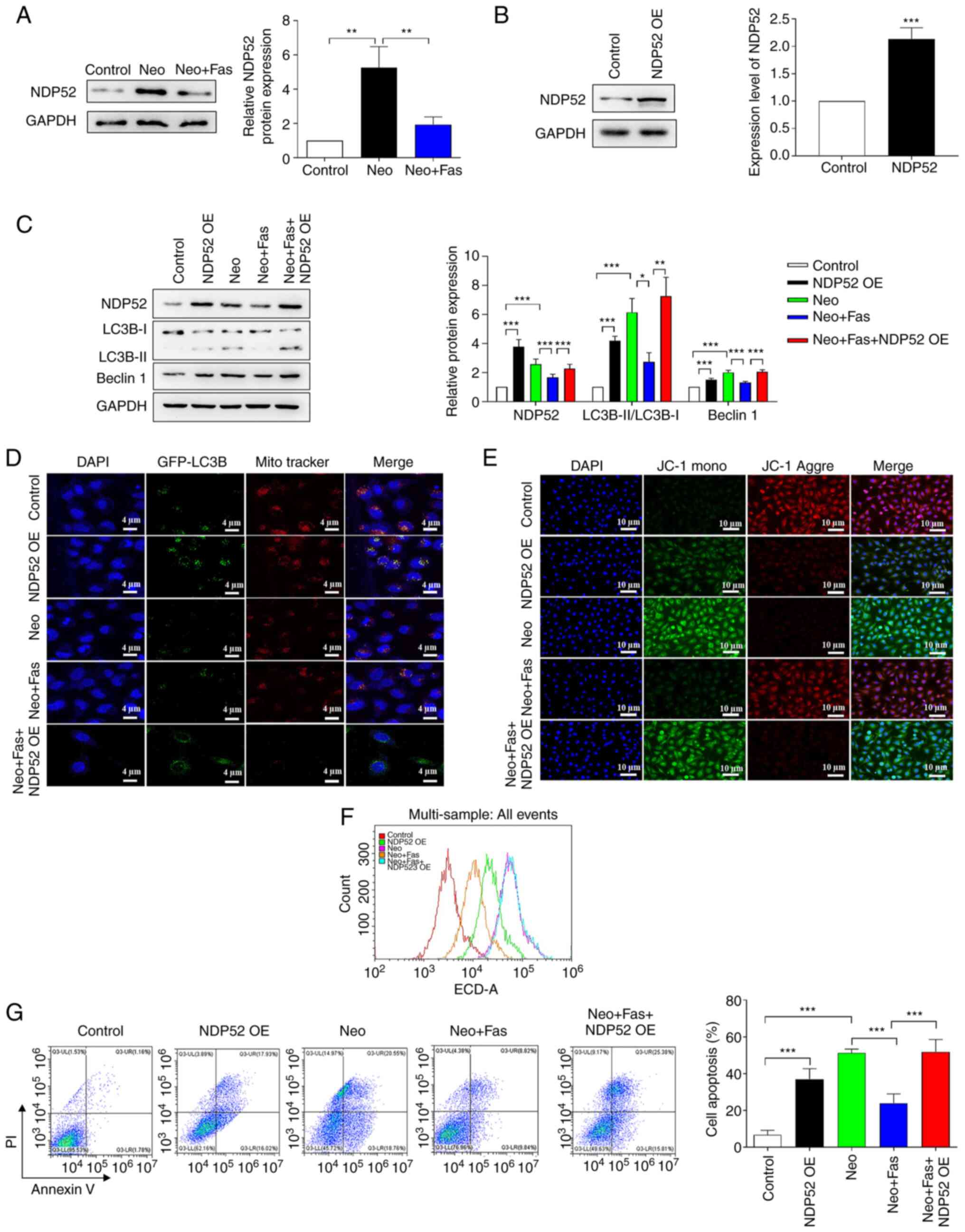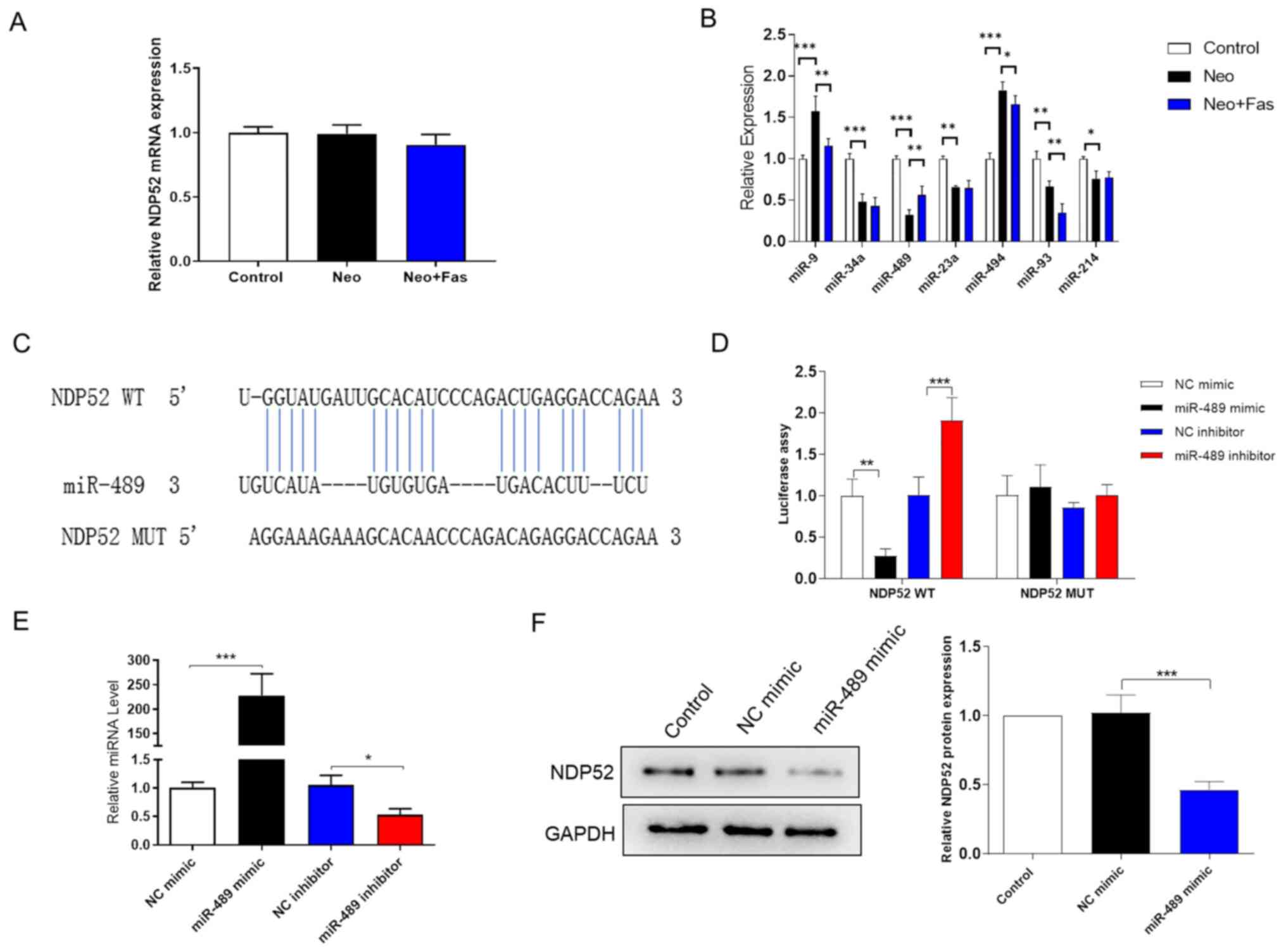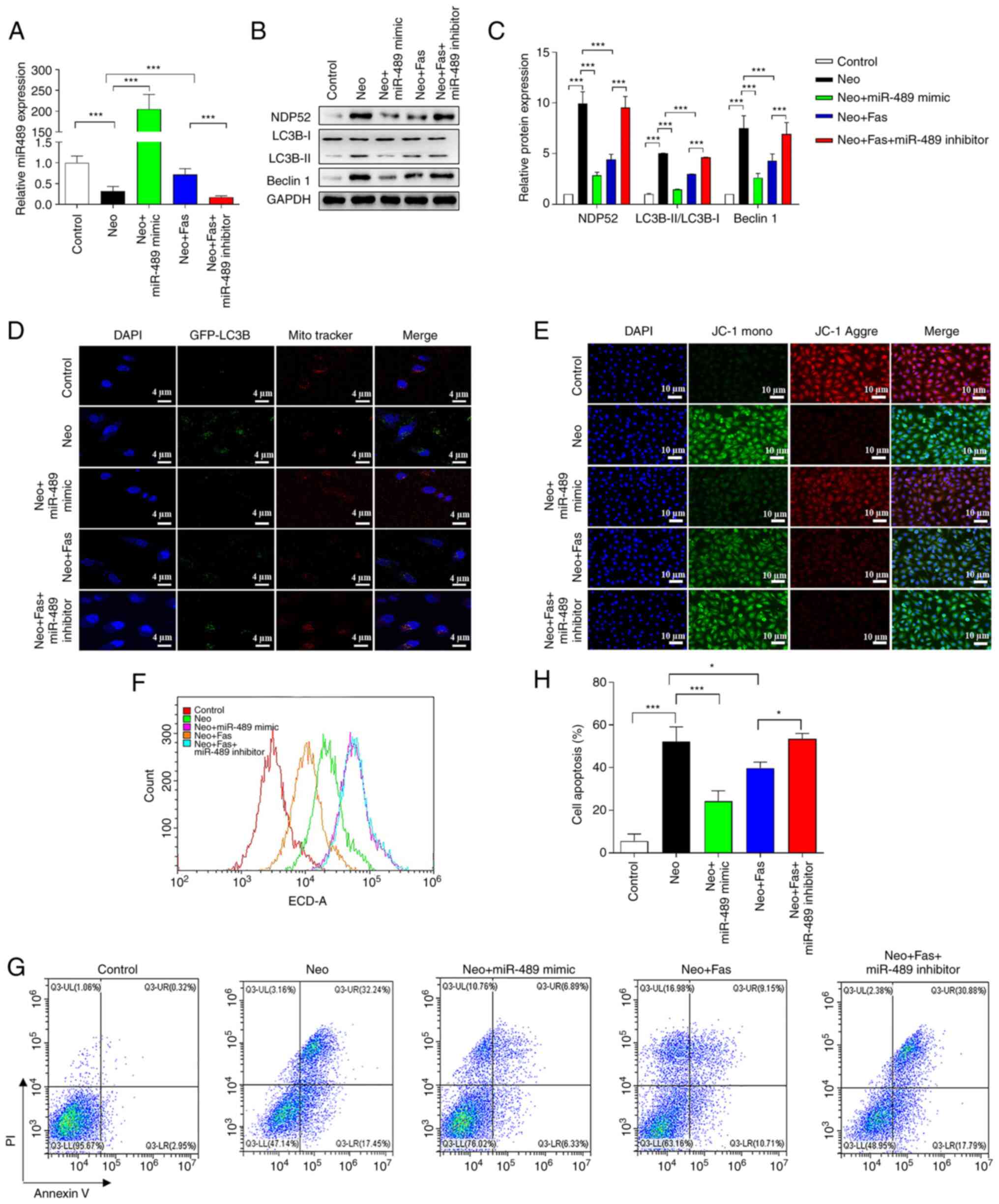|
1
|
Ng M and Horlbeck DM: Sensorineural
hearing loss-congenital-genetics. In: Encyclopedia of
Otolaryngology, Head and Neck Surgery. Kountakis SE (ed). Springer,
Berlin, Heidelberg, 2013.
|
|
2
|
Lin RJ, Krall R, Westerberg BD, Chadha NK
and Chau JK: Systematic review and meta-analysis of the risk
factors for sudden sensorineural hearing loss in adults.
Laryngoscope. 122:624–635. 2012.PubMed/NCBI View Article : Google Scholar
|
|
3
|
Arkaravichien W and Schacht J: Drug
induced hearing loss: A worldwide problem. Int Med J. 4:243–251.
1997.
|
|
4
|
Cone BK, Wake M, Tobin S, Poulakis Z and
Rickards FW: Slight-mild sensorineural hearing loss in children:
Audiometric, clinical, and risk factor profiles. Ear Hear.
31:202–212. 2010.PubMed/NCBI View Article : Google Scholar
|
|
5
|
Xiong H, Lai L, Ye Y and Zheng Y: Glucose
protects cochlear hair cells against oxidative stress and
attenuates noise induced hearing loss in mice. Neurosci Bull.
37:657–668. 2021.PubMed/NCBI View Article : Google Scholar
|
|
6
|
Ware SL: Human Hearing Loss. PeerJ
PrePrints. 2(e378v1)2014.
|
|
7
|
Zhang Y, Li W, He Z, Wang Y, Shao B, Cheng
C, Zhang S, Tang M, Qian X, Kong W, et al: Pre treatment with
fasudil prevents neomycin induced hair cell damage by reducing the
accumulation of reactive oxygen speciec. Front Mol Neurosci.
12(264)2019.PubMed/NCBI View Article : Google Scholar
|
|
8
|
Nakagawa T, Yamane H, Takayama M, Sunami K
and Nakai Y: Time-dependent response of vestibular hair cells of
guinea pigs following high-dose applications of streptomycin. Acta
Otolaryngol Suppl. 538:32–35. 1998.PubMed/NCBI View Article : Google Scholar
|
|
9
|
Becker B and Cooper MA: Aminoglycoside
antibiotics in the 21st century. ACS Chem Biol. 8:105–115.
2013.PubMed/NCBI View Article : Google Scholar
|
|
10
|
Brignull HR, Raible DW and Stone JS:
Feathers and fins: Non-mammalian models for hair cell regeneration.
Brain Res. 1277:12–23. 2009.PubMed/NCBI View Article : Google Scholar
|
|
11
|
Chen J, Guan L, Zhu H, Xiong S, Zeng L and
Jiang H: Transplantation of mouse-induced pluripotent stem cells
into the cochlea for the treatment of sensorineural hearing loss.
Acta Otolaryngol. 137:1136–1142. 2017.PubMed/NCBI View Article : Google Scholar
|
|
12
|
Kujawa SG and Liberman MC: Synaptopathy in
the noise-exposed and aging cochlea: Primary neural degeneration in
acquired sensorineural hearing loss. Hear Res. 330 (Pt B):191–199.
2015.PubMed/NCBI View Article : Google Scholar
|
|
13
|
Liberman MC: Noise-induced and age-related
hearing loss: New perspectives and potential therapies. F1000Res.
6(927)2017.PubMed/NCBI View Article : Google Scholar
|
|
14
|
Géléoc GS and Holt JR: Sound strategies
for hearing restoration. Science. 344(1241062)2014.PubMed/NCBI View Article : Google Scholar
|
|
15
|
Chen Y, Huang WG, Zha DJ, Qiu JH, Wang JL,
Sha SH and Schacht J: Aspirin attenuates gentamicin ototoxicity:
From the laboratory to the clinic. Hear Res. 226:178–182.
2007.PubMed/NCBI View Article : Google Scholar
|
|
16
|
Kamogashira T, Fujimoto C and Yamasoba T:
Reactive oxygen species, apoptosis, and mitochondrial dysfunction
in hearing loss. BioMed Res Int. 2015(617207)2015.PubMed/NCBI View Article : Google Scholar
|
|
17
|
Jiang H, Sha SH and Schacht J: NF-kappaB
pathway protects cochlear hair cells from aminoglycoside-induced
ototoxicity. J Neurosci Res. 79:644–651. 2005.PubMed/NCBI View Article : Google Scholar
|
|
18
|
Momiyama J, Hashimoto T, Matsubara A,
Futai K, Namba A and Shinkawa H: Leupeptin, a calpain inhibitor,
protects inner ear hair cells from aminoglycoside ototoxicity.
Tohoku J Exp Med. 209:89–97. 2006.PubMed/NCBI View Article : Google Scholar
|
|
19
|
Yamashita K, Kotani Y, Nakajima Y,
Shimazawa M, Yoshimura S, Nakashima S, Iwama T and Hara H: Fasudil,
a Rho kinase (ROCK) inhibitor, protects against ischemic neuronal
damage in vitro and in vivo by acting directly on neurons. Brain
Res. 1154:215–224. 2007.PubMed/NCBI View Article : Google Scholar
|
|
20
|
Greathouse KM, Henderson BW, Gentry EG and
Herskowitz JH: Fasudil or genetic depletion of ROCK1 or ROCK2
induces anxiety-like behaviors. Behav Brain Res.
373(112083)2019.PubMed/NCBI View Article : Google Scholar
|
|
21
|
Masaoka H, Takasato Y, Nojiri T, Hayakawa
T, Akimoto H, Yatsushige H, Toumori H, Miyazaki Y and Honma M:
Clinical effect of Fasudil hydrochloride for cerebral vasospasm
following subarachnoid hemorrhage. Acta Neurochir Suppl (Wien).
77:209–211. 2001.PubMed/NCBI View Article : Google Scholar
|
|
22
|
Scherer EQ, Arnold W and Wangemann P:
Pharmacological reversal of endothelin-1 mediated constriction of
the spiral modiolar artery: A potential new treatment for sudden
sensorineural hearing loss. BMC Ear Nose Throat Disord.
5(10)2005.PubMed/NCBI View Article : Google Scholar
|
|
23
|
Bonnevier J, Fässler R, Somlyo AP, Somlyo
AV and Arner A: Modulation of Ca2+ sensitivity by cyclic
nucleotides in smooth muscle from protein kinase G-deficient mice.
J Biol Chem. 279:5146–5151. 2004.PubMed/NCBI View Article : Google Scholar
|
|
24
|
Lesniak W, Pecoraro VL and Schacht J:
Ternary complexes of gentamicin with iron and lipid catalyze
formation of reactive oxygen species. Chem Res Toxicol. 18:357–364.
2005.PubMed/NCBI View Article : Google Scholar
|
|
25
|
Davis RJ: Signal transduction by the JNK
group of MAP kinases. Cell. 103:239–252. 2000.PubMed/NCBI View Article : Google Scholar
|
|
26
|
Pirvola U, Xing-Qun L, Virkkala J, Saarma
M, Murakata C, Camoratto AM, Walton KM and Ylikoski J: Rescue of
hearing, auditory hair cells, and neurons by CEP-1347/KT7515, an
inhibitor of c-Jun N-terminal kinase activation. J Neurosci.
20:43–50. 2000.PubMed/NCBI View Article : Google Scholar
|
|
27
|
Wang J, Van De Water TR, Bonny C, de
Ribaupierre F, Puel JL and Zine A: A peptide inhibitor of c-Jun
N-terminal kinase protects against both aminoglycoside and acoustic
trauma-induced auditory hair cell death and hearing loss. J
Neurosci. 23:8596–8607. 2003.PubMed/NCBI View Article : Google Scholar
|
|
28
|
Eshraghi AA, Wang J, Adil E, He J, Zine A,
Bublik M, Bonny C, Puel JL, Balkany TJ and Van De Water TR:
Blocking c-Jun-N-terminal kinase signaling can prevent hearing loss
induced by both electrode insertion trauma and neomycin
ototoxicity. Hear Res. 226:168–177. 2007.PubMed/NCBI View Article : Google Scholar
|
|
29
|
Yuan B, Yu WY, Dai LS, Gao Y, Ding Y, Yu
XF, Chen J and Zhang JB: Expression of microRNA 26b and
identification of its target gene EphA2 in pituitary tissues in
Yanbian cattle. Mol Med Rep. 12:5753–5761. 2015.PubMed/NCBI View Article : Google Scholar
|
|
30
|
Beisel K, Hansen L, Soukup G and Fritzsch
B: Regenerating cochlear hair cells: Quo vadis stem cell. Cell
Tissue Res. 333:373–379. 2008.PubMed/NCBI View Article : Google Scholar
|
|
31
|
Geng W and Liu L: miR-494 alleviates
lipopolysaccharide (LPS)-induced autophagy and apoptosis in PC-12
cells by targeting IL-13. Adv Clin Exp Med. 28:85–94.
2019.PubMed/NCBI View Article : Google Scholar
|
|
32
|
Kuhn S, Johnson SL, Furness DN, Chen J,
Ingham N, Hilton JM, Steffes G, Lewis MA, Zampini V, Hackney CM, et
al: miR-96 regulates the progression of differentiation in
mammalian cochlear inner and outer hair cells. Proc Natl Acad Sci
USA. 108:2355–2360. 2011.PubMed/NCBI View Article : Google Scholar
|
|
33
|
Ghasemi-Dehkordi P, Allahbakhshian-Farsani
M, Abdian N, Mirzaeian A, Saffari-Chaleshtori J, Heybati F, Mardani
G, Karimi-Taghanaki A, Doosti A, Jami MS, et al: Comparison between
the cultures of human induced pluripotent stem cells (hiPSCs) on
feeder-and serum-free system (Matrigel matrix), MEF and HDF feeder
cell lines. J Cell Commun Signal. 9:233–246. 2015.PubMed/NCBI View Article : Google Scholar
|
|
34
|
Zhang B, Ji S, Ma F, Ma Q, Lu X and Chen
X: miR-489 acts as a tumor suppressor in human gastric cancer by
targeting PROX1. Am J Cancer Res. 6:2021–2030. 2016.PubMed/NCBI
|
|
35
|
Patel Y, Shah N, Lee JS, Markoutsa E, Jie
C, Liu S, Botbyl R, Reisman D, Xu P and Chen H: A novel
double-negative feedback loop between miR-489 and the
HER2-SHP2-MAPK signaling axis regulates breast cancer cell
proliferation and tumor growth. Oncotarget. 7:18295–18308.
2016.PubMed/NCBI View Article : Google Scholar
|
|
36
|
Li J, Qu W, Jiang Y, Sun Y, Cheng Y, Zou T
and Du S: miR-489 suppresses proliferation and invasion of human
bladder cancer cells. Oncol Res. 24:391–398. 2016.PubMed/NCBI View Article : Google Scholar
|
|
37
|
Soni M, Patel Y, Markoutsa E, Jie C, Liu
S, Xu P and Chen H: Autophagy, cell viability, and chemoresistance
are regulated by miR 489 in breast cancer. Mol Cancer Res.
16:1348–1360. 2018.PubMed/NCBI View Article : Google Scholar
|
|
38
|
Liao CC, Ho MY, Liang SM and Liang CM:
Autophagic degradation of SQSTM1 inhibits ovarian cancer motility
by decreasing DICER1 and AGO2 to induce MIRLET7A-3P. Autophagy.
14:2065–2082. 2018.PubMed/NCBI View Article : Google Scholar
|
|
39
|
Livak KJ and Schmittgen TD: Analysis of
relative gene expression data using real-time quantitative PCR and
the 2(-ΔΔC(T)) method. Methods. 25:402–408. 2001.PubMed/NCBI View Article : Google Scholar
|
|
40
|
Fischel-Ghodsian N: Genetic factors in
aminoglycoside toxicity. Pharmacogenomics. 6:27–36. 2005.PubMed/NCBI View Article : Google Scholar
|
|
41
|
Zheng Z, Tang D, Zhao L, Li W, Han J, Hu
B, Nie G and He Y: Liproxstatin 1 protects hair cell like HEI OC1
cells and cochlear hair cells against neomycin ototoxicity. Oxid
Med Cell Longev. 2020(1782659)2020.PubMed/NCBI View Article : Google Scholar
|
|
42
|
Mortimore GE and Pösö AR: Intracellular
protein catabolism and its control during nutrient deprivation and
supply. Annu Rev Nutr. 7:539–564. 1987.PubMed/NCBI View Article : Google Scholar
|
|
43
|
He Z, Guo L, Shu Y, Fang Q, Zhou H, Liu Y,
Liu D, Lu L, Zhang X, Ding X, et al: Autophagy protects auditory
hair cells against neomycin-induced damage. Autophagy.
13:1884–1904. 2017.PubMed/NCBI View Article : Google Scholar
|
|
44
|
Djavaheri-Mergny M, Amelotti M, Mathieu J,
Besançon F, Bauvy C, Souquère S, Pierron G and Codogno P: NF-kappaB
activation represses tumor necrosis factor-alpha-induced autophagy.
J Biol Chem. 281:30373–30382. 2006.PubMed/NCBI View Article : Google Scholar
|
|
45
|
Lee Y, Ahn C, Han J, Choi H, Kim J, Yim J,
Lee J, Provost P, Rådmark O, Kim S, et al: The nuclear RNase III
Drosha initiates microRNA processing. Nature. 425:415–419.
2003.PubMed/NCBI View Article : Google Scholar
|
|
46
|
Chendrimada TP, Gregory RI, Kumaraswamy E,
Norman J, Cooch N, Nishikura K and Shiekhattar R: TRBP recruits the
Dicer complex to Ago2 for microRNA processing and gene silencing.
Nature. 436:740–744. 2005.PubMed/NCBI View Article : Google Scholar
|
|
47
|
Ameres SL and Zamore PD: Diversifying
microRNA sequence and function. Nat Rev Mol Cell Biol. 14:475–488.
2013.PubMed/NCBI View Article : Google Scholar
|
|
48
|
Forman JJ and Coller HA: The code within
the code: microRNAs target coding regions. Cell Cycle. 9:1533–1541.
2010.PubMed/NCBI View Article : Google Scholar
|
|
49
|
Lytle JR, Yario TA and Steitz JA: Target
mRNAs are repressed as efficiently by microRNA-binding sites in the
5' UTR as in the 3' UTR. Proc Natl Acad Sci USA. 104:9667–9672.
2007.PubMed/NCBI View Article : Google Scholar
|
|
50
|
Meister G, Landthaler M, Patkaniowska A,
Dorsett Y, Teng G and Tuschl T: Human Argonaute2 mediates RNA
cleavage targeted by miRNAs and siRNAs. Mol Cell. 15:185–197.
2004.PubMed/NCBI View Article : Google Scholar
|
|
51
|
Mizushima N: Autophagy: Process and
function. Genes Dev. 21:2861–2873. 2007.PubMed/NCBI View Article : Google Scholar
|
|
52
|
Li W, Yang Y, Ba Z, Li S, Chen H, Hou X,
Ma L, He P, Jiang L, Li L, et al: MicroRNA-93 regulates
hypoxia-induced autophagy by targeting ULK1. Oxid Med Cell Longev.
2017(2709053)2017.PubMed/NCBI View Article : Google Scholar
|
|
53
|
Liu L, Ren W and Chen K: miR-34a promotes
apoptosis and inhibits autophagy by targeting HMGB1 in acute
myeloid leukemia cells. Cell Physiol Biochem. 41:1981–1992.
2017.PubMed/NCBI View Article : Google Scholar
|
|
54
|
Si X, Cao D, Chen J, Nie Y, Jiang Z, Chen
MY, Wu JF and Guan XD: miR 23a downregulation modulates the
inflammatory response by targeting ATG12 mediated autophagy. Mol
Med Rep. 18:1524–1530. 2018.PubMed/NCBI View Article : Google Scholar
|
|
55
|
Zhou DM, Sun LL, Zhu J, Chen B, Li XQ and
Li WD: miR-9 promotes angiogenesis of endothelial progenitor cell
to facilitate thrombi recanalization via targeting TRPM7 through
PI3K/Akt/autophagy pathway. J Cell Mol Med. 24:4624–4632.
2020.PubMed/NCBI View Article : Google Scholar
|
|
56
|
Dulon D, Hiel H, Aurousseau C, Erre JP and
Aran JM: Pharmacokinetics of gentamicin in the sensory hair cells
of the organ of Corti: Rapid uptake and long term persistence. C R
Acad Sci III. 316:682–687. 1993.PubMed/NCBI
|
|
57
|
Lemasters JJ: Selective mitochondrial
autophagy, or mitophagy, as a targeted defense against oxidative
stress, mitochondrial dysfunction, and aging. Rejuvenation Res.
8:3–5. 2005.PubMed/NCBI View Article : Google Scholar
|
|
58
|
Holze C, Michaudel C, Mackowiak C, Haas
DA, Benda C, Hubel P, Pennemann FL, Schnepf D, Wettmarshausen J,
Braun M, et al: Oxeiptosis, a ROS-induced caspase-independent
apoptosis-like cell-death pathway. Nat Immunol. 19:130–140.
2018.PubMed/NCBI View Article : Google Scholar
|
|
59
|
Wang Z, Yu K, Hu Y, Su F, Gao Z, Hu T,
Yang Y, Cao X and Qian F: Schisantherin A induces cell apoptosis
through ROS/JNK signaling pathway in human gastric cancer cells.
Biochem Pharmacol. 173(113673)2020.PubMed/NCBI View Article : Google Scholar
|
|
60
|
Esterberg R, Linbo T, Pickett SB, Wu P, Ou
HC, Rubel EW and Raible DW: Mitochondrial calcium uptake underlies
ROS generation during aminoglycoside-induced hair cell death. J
Clin Invest. 126:3556–3566. 2016.PubMed/NCBI View Article : Google Scholar
|
|
61
|
Platini F, Pérez-Tomás R, Ambrosio S and
Tessitore L: Understanding autophagy in cell death control. Curr
Pharm Des. 16:101–113. 2010.PubMed/NCBI View Article : Google Scholar
|
|
62
|
Su Z, Yang Z, Xu Y, Chen Y and Yu Q:
Apoptosis, autophagy, necroptosis, and cancer metastasis. Mol
Cancer. 14(48)2015.PubMed/NCBI View Article : Google Scholar
|
|
63
|
Sheth S, Mukherjea D, Rybak LP and
Ramkumar V: Mechanisms of cisplatin induced ototoxicity and
otoprotection. Front Cell Neurosci. 11(338)2017.PubMed/NCBI View Article : Google Scholar
|
|
64
|
Tabuchi K, Nishimura B, Nakamagoe M,
Hayashi K, Nakayama M and Hara A: Ototoxicity: Mechanisms of
cochlear impairment and its prevention. Curr Med Chem.
18:4866–4871. 2011.PubMed/NCBI View Article : Google Scholar
|
|
65
|
Niwa K, Matsunobu T, Kurioka T, Kamide D,
Tamura A, Tadokoro S, Satoh Y and Shiotani A: The beneficial effect
of Hangesha-shin-to (TJ-014) in gentamicin-induced hair cell loss
in the rat cochlea. Auris Nasus Larynx. 43:507–513. 2016.PubMed/NCBI View Article : Google Scholar
|
|
66
|
Choung YH, Taura A, Pak K, Choi SJ, Masuda
M and Ryan AF: Generation of highly-reactive oxygen species is
closely related to hair cell damage in rat organ of Corti treated
with gentamicin. Neuroscience. 161:214–226. 2009.PubMed/NCBI View Article : Google Scholar
|
|
67
|
Vernon PJ and Tang D: Eat-me: Autophagy,
phagocytosis, and reactive oxygen species signaling. Antioxid Redox
Signal. 18:677–691. 2013.PubMed/NCBI View Article : Google Scholar
|
|
68
|
Wang X, Wang P, Zhang Z, Farré JC, Li X,
Wang R, Xia Z, Subramani S and Ma C: The autophagic degradation of
cytosolic pools of peroxisomal proteins by a new selective pathway.
Autophagy. 16:154–166. 2020.PubMed/NCBI View Article : Google Scholar
|
|
69
|
Yuan H, Wang X, Hill K, Chen J, Lemasters
J, Yang SM and Sha SH: Autophagy attenuates noise-induced hearing
loss by reducing oxidative stress. Antioxid Redox Signal.
22:1308–1324. 2015.PubMed/NCBI View Article : Google Scholar
|
|
70
|
Oh KH, Rah YC, Hwang KH, Lee SH, Kwon SY,
Cha JH and Choi J: Melatonin mitigates neomycin-induced hair cell
injury in zebrafish. Drug Chem Toxicol. 40:390–396. 2017.PubMed/NCBI View Article : Google Scholar
|
|
71
|
Lee Y, Jeon K, Lee JT, Kim S and Kim VN:
MicroRNA maturation: Stepwise processing and subcellular
localization. EMBO J. 21:4663–4670. 2002.PubMed/NCBI View Article : Google Scholar
|
|
72
|
Feng H, Huang X, Fu W, Dong X, Yang F, Li
L and Chu L: A Rho kinase inhibitor (Fasudil) suppresses TGF-β
mediated autophagy in urethra fibroblasts to attenuate traumatic
urethral stricture (TUS) through re-activating Akt/mTOR pathway: An
in vitro study. Life Sci. 267(118960)2021.PubMed/NCBI View Article : Google Scholar
|
|
73
|
Xie FJ, Zheng QQ, Qin J, Zhang LL, Han N
and Mao WM: Autophagy inhibition stimulates apoptosis in
oesophageal squamous cell carcinoma treated with fasudil. J Cancer.
9:1050–1056. 2018.PubMed/NCBI View Article : Google Scholar
|
|
74
|
Falcon B, Noad J, McMahon H, Randow F and
Goedert M: Galectin-8-mediated selective autophagy protects against
seeded tau aggregation. J Biol Chem. 293:2438–2451. 2018.PubMed/NCBI View Article : Google Scholar
|
|
75
|
Gibbings D, Mostowy S and Voinnet O:
Autophagy selectively regulates miRNA homeostasis. Autophagy.
9:781–783. 2013.PubMed/NCBI View Article : Google Scholar
|
|
76
|
Gibbings D, Mostowy S, Jay F, Schwab Y,
Cossart P and Voinnet O: Selective autophagy degrades DICER and
AGO2 and regulates miRNA activity. Nat Cell Biol. 14:1314–1321.
2012.PubMed/NCBI View Article : Google Scholar : Erratum in: Nat
Cell Biol 17: 1088, 2015.
|
|
77
|
Hu JL, He GY, Lan XL, Zeng ZC, Guan J,
Ding Y, Qian XL, Liao WT, Ding YQ and Liang L: Inhibition of
ATG12-mediated autophagy by miR-214 enhances radiosensitivity in
colorectal cancer. Oncogenesis. 7(16)2018.PubMed/NCBI View Article : Google Scholar
|
|
78
|
Sivakumaran TA, Resendes BL, Robertson NG,
Giersch AB and Morton CC: Characterization of an abundant COL9A1
transcript in the cochlea with a novel 3' UTR: Expression studies
and detection of miRNA target sequence. J Assoc Res Otolaryngol.
7:160–172. 2006.PubMed/NCBI View Article : Google Scholar
|
|
79
|
Xiong H, Chen S, Lai L, Yang H, Xu Y, Pang
J, Su Z, Lin H and Zheng Y: Modulation of miR-34a/SIRT1 signaling
protects cochlear hair cells against oxidative stress and delays
age-related hearing loss through coordinated regulation of
mitophagy and mitochondrial biogenesis. Neurobiol Aging. 79:30–42.
2019.PubMed/NCBI View Article : Google Scholar
|
|
80
|
Masumoto A, Mohri M, Shimokawa H, Urakami
L, Usui M and Takeshita A: Suppression of coronary artery spasm by
the Rho-kinase inhibitor fasudil in patients with vasospastic
angina. Circulation. 105:1545–1547. 2002.PubMed/NCBI View Article : Google Scholar
|
|
81
|
Shibuya M, Hirai S, Seto M, Satoh S and
Ohtomo E: Fasudil Ischemic Stroke Study Group. Effects of fasudil
in acute ischemic stroke: Results of a prospective
placebo-controlled double-blind trial. J Neurol Sci. 238:31–39.
2005.PubMed/NCBI View Article : Google Scholar
|


















